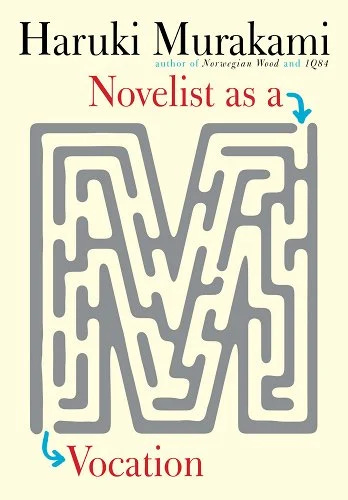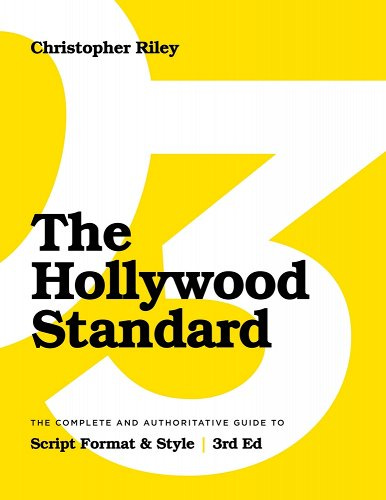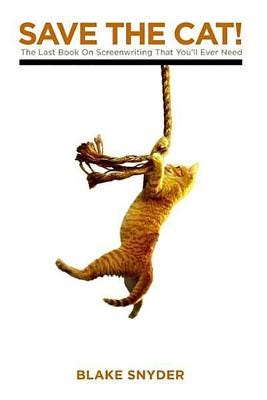
For the past few weeks, I have been working on a screenplay. I can’t say too much about the project yet, though that might change soon. But I can say that I am making good progress, and it has taken me several sleepless nights to get there.
That said, it’s been an interesting journey for me to get here. I don’t consider myself primarily a screenwriter. Sure, I live in Los Angeles. But I considered myself more of a poet and prose writer than anything. I attended an MFA in Writing for fiction, been a fiction editor for an online literary magazine, worked as a contributor/ staff writer for others, and published both poetry and essays this year. But I guess what really throws me off about considering myself a screenwriter is how I never really studied it. At least, in a classroom. I only ever took two classes on screenwriting. Everything else I learned from books on screenwriting.
A little while back, I published a post about books on writing and why I love reading them, mentioning a few titles such as On Writing by Stephen King, Bird by Bird by Anne Lamott, Consider This by Chuck Palahniuk, and the recently released in English Novelist as a Vocation by Haruki Murakami. I mentioned that I loved a lot of these books because they were more conversations on writing than actual how-tos on writing. In typical Murakami fashion, Murakami offers no straight answers to any of the questions he proposed in his book. That’s not to mean there were no interesting takeaways from what he wrote about novels and novelists. On the contrary, I appreciate these books precisely because they are not lecturing me about the craft of writing. Writing prose and poetry is, after all, highly open to experimenting with characters, plots, and structures.
Which is what brings me to books on screenwriting. Screenwriting is just a different form of writing than prose and poetry. There’s not really any freedom in exploring wordcraft with screenwriting. In fact, you shouldn’t be experimenting with words at all. Screenwriting is a much more structured and locked-down format. When it comes to screenwriting, there are a lot more rules to follow than with novels, short stories, personal essays, memoirs, and poetry. The reason, of course, is that all of those other genres are about the written word. Screenplays aren’t. The page isn’t the final product. The film is.
I first started exploring screenwriting during my undergrad when I heard about a week-long screenwriting workshop from a classmate of mine who was majoring in film. Though I was majoring in English, my classmate knew I wanted to be a writer and encouraged me to attend. Until then, I had never even thought about writing for film or television. But the workshop was so much fun that I decided to take a summer TV writing course the next year. Then I wrote one (very bad) short comedy and shelved whatever screenwriting ambitions I had while attending my MFA for the next two years.
Shortly after graduating, I was invited by a friend to give a course on screenwriting. He had only heard the phrase “MFA in Writing” and thought that was enough for me to teach younger students about storytelling. It had been five years by then that I had put screenwriting away. Though I accepted the offer, I had to study the craft a little more intensively to make sure I had something to teach the students. So I turned to books on screenwriting.
A lot of the things about books on writing apply to the books on screenwriting as well: there are a lot of bad ones and some good ones. That said, there is more to learn from books on screenwriting than there is from books on writing prose and poetry given the differences between the visual medium and the written one. Screenwriting is a locked-down medium. It has rules, more rules than poetry and prose could ever have. Also, things have to be visually written. When we add action into the text of a screenplay, it is meant to be visually representative of what the audience might see on a screen, meaning you can’t write a character’s thoughts or feelings like you would in a novel. And alongside that, the format. One has to know how to properly format their script. How do you write a telephone conversation visually in proper screenplay format? What about a conversation in another language with subtitles? Lots to learn there, though there’s a book for that.
But when it comes to the actual storytelling, the most pressing matter is the page count. Every page in a script is equal to one minute, and it is industry standard for feature screenplays to not surpass 120 pages, which would be 2 hours for screening. Where with a novel you could keep writing even past 1,000 pages and everything is fine, that is an absolute no-no for a screenplay. Thus, the most important lesson I learned from screenwriting books about storytelling is structure. For a feature screenplay, you have to learn to tell your entire story in only 120 minutes. For a TV pilot, that would be 60 pages for an hour drama and 30 pages for a half-hour sitcom. Because you do not have that much time to explore your story, you have to be economical with your story and know when to hit certain points and how.
Alongside formatting one’s script, learning story structure is absolutely essential for a screenwriter. It was the most oft-mentioned theme in every worthy screenwriting book I read. In Syd Field’s Screenplay, story structure is defined through the 3-act structure. In Blake Snyder’s Save the Cat, it is through the story beats accompanied by page numbers. In John Truby’s The Anatomy of Story, it is also through story beats, though Truby does not restrain them to page numbers. Regardless, the idea is the same throughout: a screenwriter has to hit certain beats to make the story work and a screenplay only gives you a limited amount of pages and time to do so.
The emphasis on beats and story structure has also transitioned into my prose writing. I cannot help but think about real estate in my prose now. If a book of mine would be 100 pages, for example, I do not want to spend more than 30% of those pages on a minor scene. I want to make sure I hit all the necessary beats within the pages I have built for myself. Story structure, overall, has made me a better writer, if not a better storyteller.
Of course, there are a lot of other things that go into screenwriting, writing, and storytelling in general that you cannot, for better or worse, learn from a book. One has to make characters believable with proper character development. The setting is important. And the story has to provide good themes as well. But when it comes to learning how to write screenplays from screenwriting books, I’ve learned that they are very useful in learning what it requires. While books on writing prose are mostly conversations, books on screenwriting are much more direct. Since you’re not publishing a screenplay so much as aspiring to produce a film/ TV show, the industry demands it. The screenplay is not the final product. Someone has to read it and say “I want to produce this.” Either way, the books I’ve read made me a self-taught screenwriter. And if anyone is in doubt as to whether these books can help, rest assured that they most likely can.
Thank you so much for reading this post! Note that I have added links to each title mentioned. Those are affiliate links to my Bookshop page, a website dedicated to having every purchase support independent bookstores. In the act of full transparency, clicking on those links and purchasing those books will also earn me a small commission, which will further help support my work and writing. You can also find my personal recommendations for books on writing and screenwriting here.
If you liked this post and would like to support but not subscribe at this time, feel free to buy me a coffee. Again, I would be eternally grateful.
See you next time! Keep writing!




